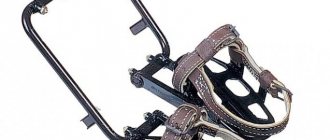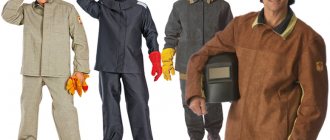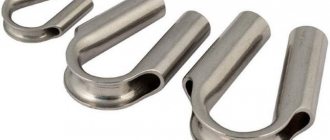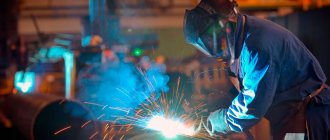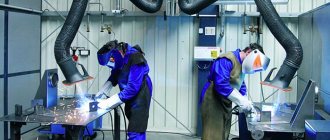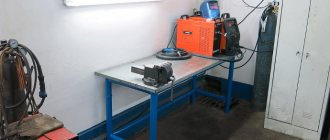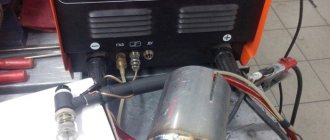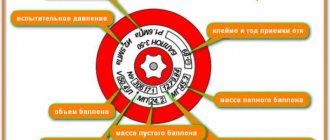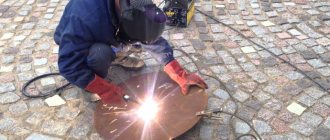Until recently, a belt for working at height did not have an alternative for fall protection. The use of belts during work at height was carried out in almost all sectors of the national economy and was the basis of the “safety system” against falling from a height.
But the belts did not solve the problem associated with ensuring the safety of work at heights, due to the increased injury rate in the event of a fall being stopped. Practice has shown that workers who fall in their belts receive injuries incompatible with further ability to work.
Thus, in the 2010s, an active search began for safer alternatives to ensure the safety of work at height at the legislative level. International standards for safety harnesses are being translated into Russian - GOST R EN 361-2008 SSBT. Translated by GOST R EN 358-2008 SSBT harnesses for restraint. The Technical Regulation “On the safety of personal protective equipment” TS TR 019/2011 comes into force.
The final point in the fate of the belts was set by the Labor Safety Rules in force until January 1, 2022 when working at height [Order of the Ministry of Labor No. 155n]. Which legally limited the use of belts to ensure safety when working at heights. Simply put, since 2015, “falling in the belt” is PROHIBITED!
Thus, there has been some ambiguity in the status of belts for working at heights as personal fall protection. That is, belts are not prohibited for use, but their use as a means of stopping a fall is prohibited. In this regard, we have prepared a short review.
So, first of all, we need to understand what a belt for working at height is in 2022. What types of belts exist.
Safety, safety construction or assembly belt?!
Currently, there are only two categories of products that can be called belts for working at height. The rest have evolved into a safety harness.
Waist belt GOST R EN 358-2008 SSBT
A lap belt is a device that wraps around the body around the waist and is designed to organize a restraint system. That is, a system in which falling is EXCLUDED! The lap belt can also be integrated into the harness. In this case, the lap belt is used not only for the restraint system, but also for the positioning system.
This product is described in more detail in GOST R EN 358-2008 SSBT.
Safety construction belt GOST 32489-2013
A safety construction belt is a personal protective equipment attached to the user’s body and used independently or in conjunction with other means to fix the working position and protect the user in the event of a fall from a height. According to GOST 32489-2013, the safety belt is used for work at height in the housing and communal services and construction industry.
The use of strapless safety belts to stop a fall is prohibited in clause 132 of the new Labor Safety Rules when working at heights:
The use of strapless safety belts in fall arrest systems is PROHIBITED due to the risk of injury or death due to the impact force on the worker's spine when stopping a fall.
However, it is permissible to use a safety belt equipped with shoulder and leg straps to stop a fall from a height. This product is described in more detail in GOST 32489-2013.
At first glance, both definitions are the same, but there is a difference:
| Belt | Safety belt | |
| Appearance | ||
| Standard | GOST R EN 358-2008 SSBT | GOST 32489-2013 |
| Peculiarities | Width at least 43 mm Height not less than 80 mm | The mechanism for adjusting the belt and fixing it on the body can be made in only one type |
| Applications | All | Housing and communal services, construction |
| Strength | Not less than 15 kN | Not less than 10 kN |
| Purpose | Preventing falls | Preventing a fall and/or (if the belt is equipped with shoulder and leg straps) safely stopping a fall. |
In general, based on the analysis of the international standards presented, we can conclude that the safety belt in accordance with GOST 32489-2013 is an “adaptation” of the European approach to waist belts from a fall from a height to the conditions of domestic realities. We remind you that strapless versions of belts are allowed to be used only as a component of a restraint system.
As for the safety belt! Products passed off as a safety belt have nothing to do with the safety system. Since the safety system and the belt are mutually exclusive concepts.
Requirements for personal protective equipment when working at heights
According to the Department of State Labor Inspection, in organizations of the republic performing construction and installation work, the main type of incident leading to an accident is the victim falling from a height, therefore, certain requirements apply to personal protective equipment that should protect the worker from adverse consequences requirements by law, they will be discussed in this article.
Document : Resolution of the Ministry of Labor of the Republic of Belarus dated April 28, 2001 No. 52 “On approval of labor protection rules when working at height” (hereinafter referred to as Labor Safety Rules when working at height)
Workplaces and passages to them, located at a height of more than 1.3 m and a distance of less than 2 m from the height difference, are fenced with temporary inventory fences in accordance with GOST 12.4.059-89 “System of labor safety standards. Construction. Inventory safety fences. General technical conditions.” (clause 61 Labor protection rules when working at height)
Personal protective equipment against falls from a height includes: safety belts, safety climbing devices, catchers with a vertical rope or with other devices, safety ropes, construction helmets, safety carabiners.
Personal protective equipment against falls from a height, both domestic and purchased abroad, must have quality certificates.
If it is impossible to use protective barriers or in the case of a short-term stay of workers, it is allowed to carry out work using a safety belt.
In this regard, the concept of “personal protective equipment for workers” is used - this is a means of protection put on or used by a person’s body or parts thereof.
For reference : personal protective equipment should be used in cases where work safety cannot be ensured by the design of equipment, organization of production processes, architectural and planning solutions and means of collective protection (clause 2.5 clause 2 of GOST 12.4.011-89 “System labor safety standards. Protective equipment for workers. General requirements and classification ")
Requirements for safety belts.
In accordance with the Labor Safety Rules when working at height, the following requirements are imposed on personal protective equipment against falls from height.
For reference : safety belts (hereinafter referred to as belts) are divided into a safety strapless belt - a belt that has one element covering the waist or chest of a person and a safety webbing belt - a belt that has two or more elements (straps) covering the human body.
Safety belts must comply with the requirements of the technical specifications for belts of specific designs.
Belts should be adjustable in length and provide a waist circumference from 640 to 1500 mm. Standard sizes of belts are established by technical specifications for belts of specific designs. The width of the load-bearing belt straps must be at least 50 mm, the strapless belt in the back must be at least 80 mm. The length of the belt sling (halyard) is established by the technical specifications for belts of specific designs. The weight of the belt should be no more than 2.1 kg.
The static breaking load for the belt must be at least 7000 N (700 kgf). The belt must withstand the dynamic load that occurs when a load weighing 100 kg falls from a height equal to two lengths of the sling (halyard). The dynamic force during protective action for a strapless safety belt and for a safety harness with only shoulder straps should not exceed 4000 N (400 kgf), for a safety harness with shoulder and leg straps - no more than 6000 N (600 kgf).
The carabiner of the lanyard (halyard) of the safety belt should provide quick and reliable fastening and unfastening with one hand when wearing an insulated mitten. The duration of the “fastening-unfastening” cycle should be no more than 3 s. The carabiner must have a safety device that prevents its accidental opening. The safety belt carabiner lock and safety device must close automatically. The force for opening the carbine must be no less than 29.4 N (3 kgf) and no more than 78.4 N (8 kgf).
The sling (halyard) of the belt for electric and gas welders and other workers performing hot work must be made of steel rope or chain. The conditions for the safe use of a sling (halyard) must be specified in the technical specifications for belts of specific designs.
The metal parts of the safety belt must not have cracks, holes, tears or burrs.
Each belt must be marked with: the manufacturer's trademark, the size and type of the belt, the date of manufacture, the mark of the technical control department, the designation of the standard or technical conditions.
Before being put into operation, as well as every 6 months, safety belts must be subjected to a static load test according to the methodology given in the standards or technical specifications for belts of specific designs (for strapless and strap-on safety belts used to protect workers when falling from a height during construction production). - installation work is covered by GOST 12.4.089-86 "System of occupational safety standards. Construction. Safety belts. General technical conditions"). After the load test, the belt is thoroughly inspected and, if there is no visible damage, it is allowed into operation.
Requirements for safety climbing devices.
For reference : A safety climbing device is a device for protecting a worker when falling from a height by smoothly braking the safety rope.
Safety climbing devices must ensure smooth braking of the safety rope when the speed of its removal from the device exceeds 1.5 m/s.
A safety climbing device must have an element for securing it to a support or to another securely fixed structural element of a building or structure.
The output end of the safety rope of the safety climbing device must be designed in the form of a loop or equipped with a ring or carabiner, to which the worker attaches the slings (halyard) of the safety belt.
The drum system of the safety climbing device, equipped with a ratcheting device with a spring, must ensure winding of a safety rope of a certain length that can withstand the dynamic load that occurs when a load weighing 100 kg falls during braking until its fall completely stops at a braking distance from 0.6 to 1, 5 m.
With a weight of the safety climbing device of 8 kg, the safety rope has a length of 5 m, with a weight of 9.4 kg - 10 m, 11 kg - 12 m, 14 kg - 20 m, 21 kg - 30 m.
Based on the specific work conditions, it is necessary to use a safety climbing device with the required length of safety rope, allowing the worker to move relatively freely during work operations at a distance of up to 5 m and even up to 30 m (depending on the safety diving device used) down from the place where the safety device is attached steeplejack device, without re-fastening the carabiner of the sling (halyard) of the safety belt.
IMPORTANT! A worker using a safety climbing device, if he falls, must beware of impacts on the structure during the pendulum swing of the activated safety climbing device.
After each actuation event, as well as periodically during operation, every 6 months, the safety climbing device must be surveyed and tested according to the method specified in the manufacturer’s technical specifications.
Requirements for catchers with a vertical rope
There are various designs of catchers that ensure pinching of a vertically located safety rope.
Catchers with a vertical safety rope are used to ensure worker safety when ascending and descending along vertical and inclined (more than 75 degrees to the horizontal) planes.
Catchers with a vertical safety rope must have a static strength of 7 kN (700 kgf) and dynamic strength that can withstand the fall of a load weighing 100 kg, attached to the shock absorber loop of the safety belt, from a height of 0.8 m. To work in a system with a catcher with a vertical safety rope the safety belt must be equipped with a shock-absorbing device, and the length of the sling must be 0.4 m.
Before ascending or descending, the worker inserts a vertical safety rope into the catcher by turning its movable cheek and brings the catcher into the working position, then attaches the carabiner of the sling (halyard) of the safety belt to the coaxial holes of the cheeks of the catcher, and the system is ready for work.
When a worker falls under his weight through the belt-sling system, the body of the catcher rotates and the safety rope is pinched between the movable and stationary cams, locking the catcher on the safety rope and keeping the worker from moving down.
For reference : Catchers with a vertical safety rope play a significant role in ensuring the safety of workers ascending or descending vertical ladders, since arc guards on vertical ladders or brackets are not effective enough for their main functional purpose and create inconvenience during transportation and storage of ladders
Requirements for safety ropes.
For safe transition at height from one workplace to another, if it is impossible to install crossing bridges or when performing minor work, safety ropes are used, located horizontally or at an angle of up to 7 degrees to the horizontal.
For reference : a safety rope is a device designed to secure one or more workers with a safety belt carabiner when performing work operations at height, consisting of a flexible steel rope located horizontally or with an inclination of up to 7 degrees, the ends of which are fixedly fixed to the structural elements of buildings and structures directly or through special elements.
For reference: General technical requirements for safety ropes (hereinafter referred to as ropes) and the conditions for their use are established by GOST 12.4.107-82 “System of occupational safety standards. Construction. Safety ropes. General technical requirements".
Ropes of specific designs must meet the requirements of the technical specifications of their manufacturers, which determine the specifics of their application, installation and operation.
The rope must be equipped with a device for attaching it to the structural elements of the building, structure and its tension, ensuring ease of installation, removal, rearrangement and the ability to change the length of the rope depending on the distance between the attachment points.
The design of the rope parts must exclude the possibility of injury to the worker’s hands. Rope parts must not have tears, burrs, sharp edges, cracks or holes.
The mass of the rope as a whole should be established by standards or technical specifications for ropes of specific designs, and each assembly unit or part of the rope should have a mass of no more than 20 kg.
IMPORTANT ! The rope should be installed above or at the level of the support plane for the feet.
When walking along the lower chords of trusses and crossbars, the rope must be installed at a height of no less than 1.5 m from the plane of support for the feet, and when walking along crane beams - no more than 1.2 m.
The length of the rope between the points of its fastening (span) should be assigned depending on the size of the structural elements of the buildings and structures on which it is installed. If the rope length is more than 12 m, intermediate supports must be installed, the distance between which should be no more than 12 m; in this case, the surface of the intermediate support with which the rope comes into contact should not have sharp edges. The intermediate support and its fastening points must be designed for a vertical static load of at least 500 kgf. The static breaking force of a rope installed at a height of more than 1.2 m from the plane of support of the worker’s feet should not be less than 40400 N (4040 kgf), and of a rope installed at a height of up to 1.2 m - less than 56000 N (5600 kgf ).
Ropes installed at a height of more than 1.2 m from the plane of support for the worker’s feet must be made of steel rope with a diameter of 10.5 mm or 11.0 mm. Steel ropes must generally be of a marking group not lower than 1558 MPa (160 kgf/sq.mm). When installing a rope above the plane of the support for the feet, it must first (before installation on intermediate supports) be tensioned with a force from 1000 N (100 kgf) to 4000 N (400 kgf) depending on the distance between the points of fastening the rope. The force on the handle when tensioning the rope should not exceed 160 N (16 kgf).
IMPORTANT! It is recommended to control the amount of pretension by the amount of sag in the middle of the span of the tensioned rope.
When installing a rope at the level of the support plane for the feet, you should not pre-tension it, and the length of the rope should be selected in such a way that the rope fixed at the ends and tensioned in the middle with a force of 100 N (10 kgf) does not extend beyond the overall dimensions of the structural elements, on which it is installed.
The fastening parts of the steel rope, as well as structural elements of buildings or other devices to which it is attached, must be designed for a horizontally applied load of 22,000 N (2,200 kgf), acting for 0.5 s.
Rope parts must retain their protective and operational properties at temperatures from minus 45 to plus 50 ° C and relative humidity up to 100 percent.
Rope fastening parts that may be subject to corrosion must have anti-corrosion coatings. Signal painting - in accordance with GOST 12.4.026-76 “System of occupational safety standards. Signal colors and safety signs.”
For reference : The organization develops and approves operating instructions for ropes in accordance with the established procedure.
Before use, and also every 6 months, the rope is tested with a static load according to the method described above.
The compliance of the rope installed in the working position with the requirements imposed on it should be determined by static loading it in the middle of the span with a load weighing 400 kg, which is applied to the rope installed in the working position. The rope is considered to have passed the test if, as a result of an external inspection, no damage or cracks are found in its parts. In this case, the operation of the rope is permitted if no damage or cracks are found in the structural elements of buildings, structures or other devices to which the rope is attached during operation.
IMPORTANT! Each rope must be marked, including: trademark (or short name of the manufacturer), static breaking force value, date of manufacture (month, year), test date (month, year), designation of the standard or technical conditions according to which the rope is manufactured .
Requirements for construction helmets.
To protect a worker’s head from mechanical damage from objects falling from above or from collisions with structural and other elements, to protect against water, electric shock when working at height in construction, installation, dismantling, performing repair, adjustment and other work, helmets in accordance with GOST must be used 12.4.087-84 “System of occupational safety standards. Construction. Construction helmets. Technical conditions".
Helmets are available in two sizes (I - from 54 to 58 cm, II - from 58 to 62 cm) with stages of adjustment of the length of the supporting tape of no more than 10 mm.
Helmets must provide maximum transmitted force with a nominal impact energy of 50 J - no more than 5 kN (500 kgf) for helmets of the first quality category and no more than 4.5 kN (450 kgf) for helmets of the highest quality category.
Depending on the operating conditions, helmets are equipped with the following:
A – for those working indoors: helmet;
B – for those working outdoors in a hot climate zone: helmet and cape;
B – for those working outdoors in a temperate climate zone: helmet, cape, padded balaclava;
G – for those working outdoors in a cold climate zone: helmet, cape, woolen balaclava;
D - for workers in a special climate zone: helmet, cape, cotton wool liner, wool liner.
For reference: The helmet consists of a body, internal equipment and a chin strap, and, at the consumer’s request, can be equipped with devices for attaching shields, noise-protection headphones and other personal protective equipment.
For reference : The helmet casing is available in four colors:
white - for management personnel, heads of workshops, sections, labor protection service workers, state inspectors of supervisory and control bodies;
red - for foremen, foremen, specialists, chief mechanics and chief power engineers;
yellow and orange - for workers and junior service personnel.
Parts of the internal equipment of the helmet are made of durable and elastic materials. The supporting tape (except for its back part) must be covered with natural or perforated artificial leather or other porous material that protects the skin from chafing.
The internal equipment of the helmet provides the ability to adjust its size if it is necessary to use a liner and should not allow the helmet to move when turning the head and performing work in an inclined position. The design of the supporting tape and shock absorber ensures regulation of the depth of the helmet on the head. The internal equipment and chin strap must be removable and have devices for attachment to the helmet body. The chin strap should be adjustable in length, and the method of fastening should allow it to be quickly detached.
The outer surface of the helmet body must be smooth, without cracks or bubbles. Inclusions of a different color are allowed on the surface of the helmet body in quantities permitted by material standards.
The internal surface of the helmet body, as well as the external and internal surfaces of the equipment, must be smoothly processed, and the edges and edges must be dulled.
The side surfaces of the helmet body must have ventilation openings with a total area of at least 200 square meters. mm, hermetically sealed by rotating flaps.
IMPORTANT! Helmets must retain their protective properties throughout their entire service life at ambient temperatures from minus 50 to plus 40 °C.
IMPORTANT! Periodic checks of the condition of helmets in use must be carried out at least once every six months.
For reference : Each helmet must be marked: on the inside of the visor or body by casting or molding the following must be applied: trademark of the manufacturer, standard designation, helmet size, production date (month, year).
Helmets must be inspected daily throughout their service life to identify defects. Helmets that have been subjected to impacts, as well as those with damage to the body or internal equipment, must be replaced. Helmets cannot be repaired.
During operation, if necessary, helmets can be sanitized by immersing in a 3-5% solution of chloramine or a 3% solution of bleach for 30-60 minutes, followed by rinsing in cold water and natural drying.
The warranty period for storage and operation of helmets is established according to the technical conditions of the manufacturers.
The above requirements are mandatory for all employers located on the territory of the Republic of Belarus, regardless of their form of ownership and organizational and legal forms.
Ivan Danelyuk , occupational safety engineer
Belt and harness
Now it is necessary to say a few words about the differences between a safety belt or lap belt and a harness. The most important difference is their purpose!
We can use a safety harness to safely stop a fall in the event of a fall. Since the harness, even in the “minimum configuration”, consists of straps on the shoulders and straps on the legs. It is unacceptable to use strapless belts or belts with only shoulder straps or only leg straps in cases where the worker may fall.
Thus, a short algorithm for deciding on the choice of a safety belt, a lap belt or a safety harness.
- Is there a risk of a worker falling from a height? yes – harness or safety belt with shoulder and leg straps no – safety belt without straps or waist belt
- Is work at height carried out in the housing and communal services industry or the construction industry?
You have the right to use both a waist belt and a safety belt to prevent falls. In any case, the choice of these products is made according to economic criteria and based on the preferences of workers.
Requirements for safety belts
In addition to comfort and ease of use, the safety belt must be very reliable - both manufacturing materials and fastening elements. The materials from which all elements of the safety belt are made must be safe and comply with GOST standards.
All elements of the safety belt must be securely connected to each other and should not cause inconvenience or pain when using this protective equipment. The straps must be adjustable in length. At the same time, the system of fasteners and length adjustment should provide the possibility of adjustment without the need to remove the belt, as well as while working with work gloves. The sash of the safety belt should be made of warming natural materials and its design should promote uniform load distribution across its entire width.
The color of the material used to make the straps and the color of the threads used to sew them should differ from each other in a contrasting form, which will enable a high-quality visual inspection of the seams for damage.
